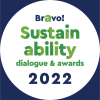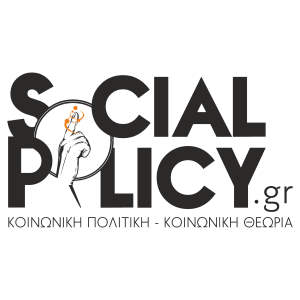Βραβείο 2021

Βραβείο 2022

Στρατηγικός συνεργάτης

Υποστηρικτές Επικοινωνίας


Open access article: https://genomicpress.kglmeridian.com/meridian/genomicpress/published/rest/pdf-watermark/v1/journals/brainmed/1/1/article-p31.pdf/watermark-pdf/
Abstract
The global surge in air pollution poses an increasingly concerning environmental risk factor for neurodevelopmental disorders, particularly autism spectrum disorder (ASD). Recent epidemiological studies have revealed compelling associations between exposure to specific air pollutants, including fine particulate matter (PM), nitrogen oxides (NO, NO2), sulfur dioxide (SO2) and ozone (O3), and increased ASD risk. While the rising global ASD prevalence, now affecting 1%–1.5% of the population, partially reflects expanded diagnostic criteria and enhanced screening, mounting evidence points to the critical role of gene–environment interactions in ASD etiology. Air pollutants can trigger multiple pathogenic mechanisms, including neuroinflammation, oxidative/nitrosative stress, epigenetic modifications, and glutamatergic/GABAergic neurotransmitter system disruption. The timing of exposure appears crucial, with heightened vulnerability during prenatal development and early childhood when critical neurodevelopmental processes, such as neuronal migration, synaptogenesis, and myelination occur. Research priorities should focus on how air pollutants affect brain development in genetically susceptible individuals, especially during pregnancy and early childhood. Better ways are needed to identify individuals at the highest risk and develop practical protective measures. Given the rising global pollution levels, this knowledge will help shape meaningful public health policies to protect future generations from environmental factors that may contribute to ASD.
Citation: Ojha SK, Amal H. Air pollution: an emerging risk factor for autism spectrum disorder. Brain Medicine. 2024;1(1):31–34. doi: 10.61373/bm024e.0115
Open access article: https://link.springer.com/article/10.1007/s40474-024-00308-9
Abstract
The purpose of this review is to provide a comprehensive update of literature published between January 2018 and April 2024, examining suicidal thoughts and behavior (STB) prevalence, risk factors, theoretical models, and interventions in autism.
We identified four recent meta-analyses and two systematic reviews. Pooled prevalence estimates in autism ranged from 34.2% for suicide ideation to 24.3% for suicide attempts. Autistic traits, interpersonal factors, and depressive symptoms were identified as STB risk factors, with elevated risk observed across the lifespan.
We included 80 studies examining STB in diagnosed autistic people or autistic traits in non-clinical samples. Autistic people were found to have an up to eightfold increased risk of death by suicide compared to non-autistic people, although reported rates varied considerably between studies; co-occurring mental health conditions, social, psychological, and cognitive factors exacerbated risk. Validated STB assessment tools and interventions for autistic people were notably scarce.
Citation: Brown, C.M., Newell, V., Sahin, E. et al. Updated Systematic Review of Suicide in Autism: 2018–2024. Curr Dev Disord Rep 11, 225–256 (2024). https://doi.org/10.1007/s40474-024-00308-9
Open access article: https://link.springer.com/article/10.1007/s00787-023-02228-2#citeas
Abstract
Autistic children (Autism Spectrum Disorder, ASD) show an increased risk of bullying victimization and often face challenges in communication and peer relationships. However, it is unclear to what extent the amount and quality of ASD traits are associated with bullying victimization. This study examined the association of bullying victimization and ASD traits in an epidemiological population of 8-year-old children (n = 4408) using parent and teacher completed Autism Spectrum Screening Questionnaires (ASSQs), both separately and combined. The ASSQ items relating to loneliness and social isolation, lack of co-operating skills, clumsiness and lack of common sense were associated with victimization in the study population. The higher the ASSQ scores, the more the children were victimized: the ASSQ scores increased in parallel with victimization from 0 (0% victimized) to 45 (64% victimized). The victimization rate was 46% in ASD sample, 2% in the total population sample and 2% in the non-ASD population sample. The results enable more targeted means for recognizing potential victimization.
Citation: Junttila, M., Kielinen, M., Jussila, K. et al. The traits of Autism Spectrum Disorder and bullying victimization in an epidemiological population. Eur Child Adolesc Psychiatry 33, 1067–1080 (2024). https://doi.org/10.1007/s00787-023-02228-2
https://dc.etsu.edu/asrf/2024/schedule/124/
Abstract
Background: Autism is a neurodevelopmental disorder characterized by enduring difficulties in behavior, cognition, and social communication. Its prevalence varies worldwide, with males being diagnosed more frequently than females. The impact of autism extends beyond the individual, affecting family dynamics, educational systems, and public perceptions. In the United States of America, 2.8% of children aged 3-8 years have autism, with fourfold higher incidence among males. Factors such as race, sex, and extreme prematurity have been associated with autism. Given that over 54% of children with autism have intellectual disabilities, and the complex inheritance pattern of the disease, exploring other determinants are crucial due to its significant impacts on individuals, family, and society. Methods: This analysis used the National Survey of Children's Health (NSCH) 2022 data, including 54,103 children aged 0-17 years. Descriptive statistics was carried out, associated determinants were established, and logistic regression was utilized to calculate odds ratios (OR), with autism as the dependent variable, adjusting for various factors. Results: The odds of autism among males were 3 times higher than in females. Children living at 0-99% of federal poverty level had 59% higher odds of autism compared to those at 400% or greater of federal poverty level. Children reporting fair or poor health demonstrated 10 times odds of autism than those with excellent health. Children with unmarried parents had 31% higher odds of autism than those with married parents, while children of unemployed parents had 64% higher odds than those with employed parents. Children with genetic or inherited conditions exhibited 5.38 odds of autism than those without such conditions. The odds of autism among children with low birth weight were 68% higher than in children with normal birth weight. Additionally, for every one event of adverse childhood experience, the odds of autism increased by 26%. Conclusion: The observed higher incidence of autism in males compared to females aligns with previous research findings. This study highlights the importance of adopting a comprehensive approach to address autism, recognizing the interaction of genetic, environmental, and socioeconomic factors in its development. Further research into the complex relationships between these characteristics is needed. With this information, support groups, policymakers, and healthcare professionals can collaboratively develop targeted intervention programs aimed at mitigating the adverse effects of these risk factors and improving the lives of individuals affected by autism.
Citation: Nwajiugo R., Zheng S., Aderinwale O., et al., 2024. Prevalence and Risk
Factors of Autism in the United States.Digital Commons @ East Tennessee State
University
Open access article: https://www.sciencedirect.com/science/article/pii/S000291652400443X
Abstract
Food and nutrition-related factors have the potential to impact development of autism spectrum disorder (ASD) and quality of life for people with ASD, but gaps in evidence exist. On 10 November 2022, Tufts University’s Friedman School of Nutrition Science and Policy and Food and Nutrition Innovation Institute hosted a 1-d meeting to explore the evidence and evidence gaps regarding the relationships of food and nutrition with ASD. This meeting report summarizes the presentations and deliberations from the meeting. Topics addressed included prenatal and child dietary intake, the microbiome, obesity, food-related environmental exposures, mechanisms and biological processes linking these factors and ASD, food-related social factors, and data sources for future research. Presentations highlighted evidence for protective associations with prenatal folic acid supplementation and ASD development, increases in risk of ASD with maternal gestational obesity, and the potential for exposure to environmental contaminants in foods and food packaging to influence ASD development. The importance of the maternal and child microbiome in ASD development or ASD-related behaviors in the child was reviewed, as was the role of discrimination in leading to disparities in environmental exposures and psychosocial factors that may influence ASD. The role of child diet and high prevalence of food selectivity in children with ASD and its association with adverse outcomes were also discussed. Priority evidence gaps identified by participants include further clarifying ASD development, including biomarkers and key mechanisms; interactions among psychosocial, social, and biological determinants; interventions addressing diet, supplementation, and the microbiome to prevent and improve quality of life for people with ASD; and mechanisms of action of diet-related factors associated with ASD. Participants developed research proposals to address the priority evidence gaps. The workshop findings serve as a foundation for future prioritization of scientific research to address evidence gaps related to food, nutrition, and ASD.
Citation: Melissa Maitin-Shepard, Perrie O’Tierney-Ginn, Aletta D Kraneveld, Kristen Lyall, Daniele Fallin, Manish Arora, Alessio Fasano, Noel T Mueller, Xiaobin
Wang, Laura E Caulfield, Aisha S Dickerson, Rochellys Diaz Heijtz, Tomo Tarui, Jeffrey B Blumberg, Calliope Holingue, Rebecca J Schmidt, Johan Garssen,
Katherine Almendinger, Pi-I Debby Lin, Dariush Mozaffarian, Food, nutrition, and autism: from soil to fork, The American Journal of Clinical Nutrition, Volume 120, Issue 1,
2024, Pages 240-256